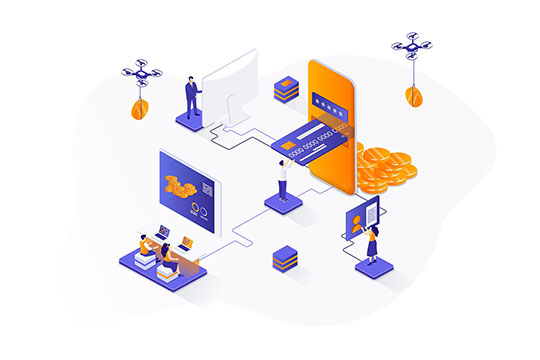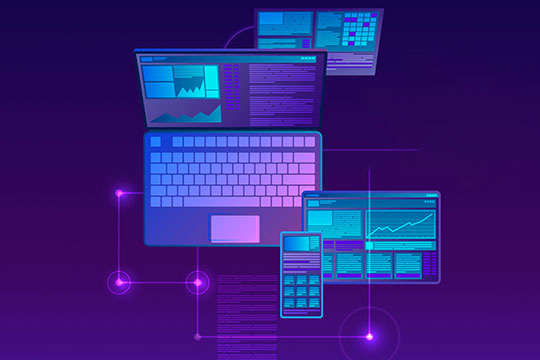A neobank is a fintech (financial technology)-based bank that only conducts business online or through a mobile app, accomplishing most of what a traditional bank can do but without the use of physical branches.
The Impact on the Financial Sector The introduction of NEO Hyper Mobile Banking is revolutionizing the financial sector. Traditional banks are adapting to these changes by integrating mobile technologies and personalization into their services to stay competitive.
Understanding NEO Hyper Mobile Banking
NEO Hyper Mobile Banking is a state-of-the-art digital banking strategy that offers users unparalleled ease and efficiency by utilising mobile technology, sophisticated data analytics, and AI-driven customisation. It provides highly customised financial data, incredibly quick transactions, round-the-clock accessibility, excellent security, and encourages financial inclusion.
This banking technology is affordable, improves client interaction, and gives customers the ability to make wise financial decisions. A new era of modern finance is being ushered in by NEO Hyper Mobile Banking, which is changing the traditional banking experience and making it more convenient, safe, and customised to individual needs.

Key Features of NEO Hyper Mobile Banking
- Hyper-Personalization NEO Hyper Mobile Banking combines AI and data analytics to offer consumers personalised financial insights and recommendations that improve their financial well-being.
- Lightning-fast transactions are another.
NEO Hyper Mobile Banking offers quick and secure transactions, including cross-border payments, with real-time processing and blockchain technology. - Constant Access
Customers have 24/7 access to their accounts, allowing them to manage their money, pay their bills, and even invest whenever it is convenient for them. - Security Modern security technologies that secure consumers’ financial data and transactions include biometric authentication and powerful encryption.
The Impact on the Financial Sector
The launch of NEO Hyper Mobile Banking is significantly changing the financial industry. Traditional banking institutions are adjusting to the shifting tide as they find themselves in a terrain that is undergoing transformation.
NEO Hyper Mobile Banking’s launch is having a big effect on the banking industry. In order to stay competitive, traditional banks are adjusting to this new wave of digital change by making investments in customization and mobile technologies. As a result, there is an emphasis on security, increased client interaction, cost savings, and efficiency.
Additionally, NEO Hyper Mobile Banking offers tailored solutions that enable users to make knowledgeable financial decisions while advancing financial inclusion and global reach. Customers’ interactions with their money are not the only things being altered by this revolution; traditional banks are also having to adapt to a highly competitive and digitally driven environment.
NEO Hyper Mobile Banking: Transforming Banking on the Go
NEO Hyper Mobile Banking is not just another banking app; it’s a revolutionary tool that empowers users to take control of their finances, offering a seamless and secure experience. With features like real-time transaction tracking, fund transfers, bill payments, and even investment management, NEO Hyper Mobile Banking is designed to meet the diverse needs of modern customers.
One of its standout features is its lightning-fast performance, enabling users to access their accounts and perform transactions at their convenience. This level of speed and responsiveness is made possible by progressive web app (PWA) technology, which combines the best of web and mobile applications.

Ndimension Labs: The Architect Behind NEO Hyper Mobile Banking
Ndimension Labs is a trusted name in the world of software and application development, known for its expertise in crafting solutions tailored to specific industries.
When it comes to the banking sector, Ndimension Labs plays a pivotal role in bringing NEO Hyper Mobile Banking to life.
The collaboration between NEO Hyper and Ndimension Labs involves a multifaceted approach, which includes:
Innovative Mobile App Development: Ndimension Labs leverages its experience in mobile app development to create a robust and user-friendly interface for NEO Hyper Mobile Banking. The app’s intuitive design and seamless functionality are a testament to their skills.
Security and Compliance: Ensuring the security of financial data is paramount in the banking sector. Ndimension Labs incorporates state-of-the-art security measures and compliance standards to protect users’ sensitive information.
Integration Capabilities: NEO Hyper Mobile Banking seamlessly integrates with various banking systems and third-party financial tools, providing a holistic financial management experience.
Scalability: Ndimension Labs designs the app with scalability in mind, allowing it to adapt and grow as per the evolving needs of the banking industry and its customers.
Continuous Support: Beyond the initial development, Ndimension Labs provides ongoing support and maintenance to ensure that NEO Hyper Mobile Banking remains a reliable and cutting-edge solution.
In the fast-paced world of mobile banking, NEO Hyper Mobile Banking, with the expert support of Ndimension Labs, is set to transform the digital banking experience.
As more users embrace the convenience and security of mobile banking, the collaboration between innovative banking solutions and proficient development partners like Ndimension Labs becomes increasingly vital. Together, they shape the future of finance, one transaction at a time.








